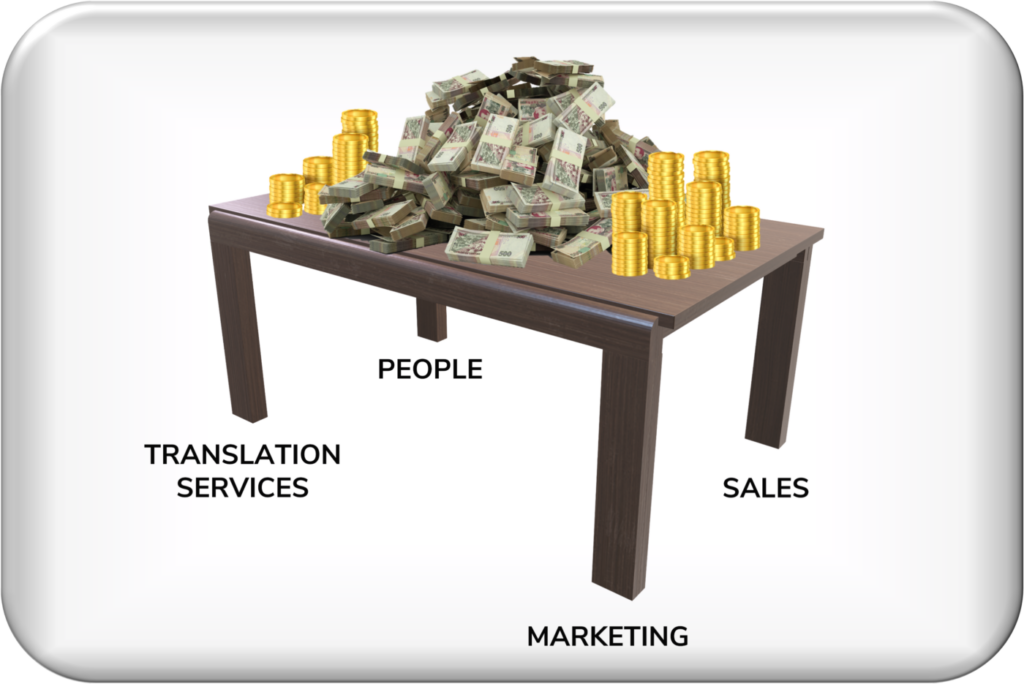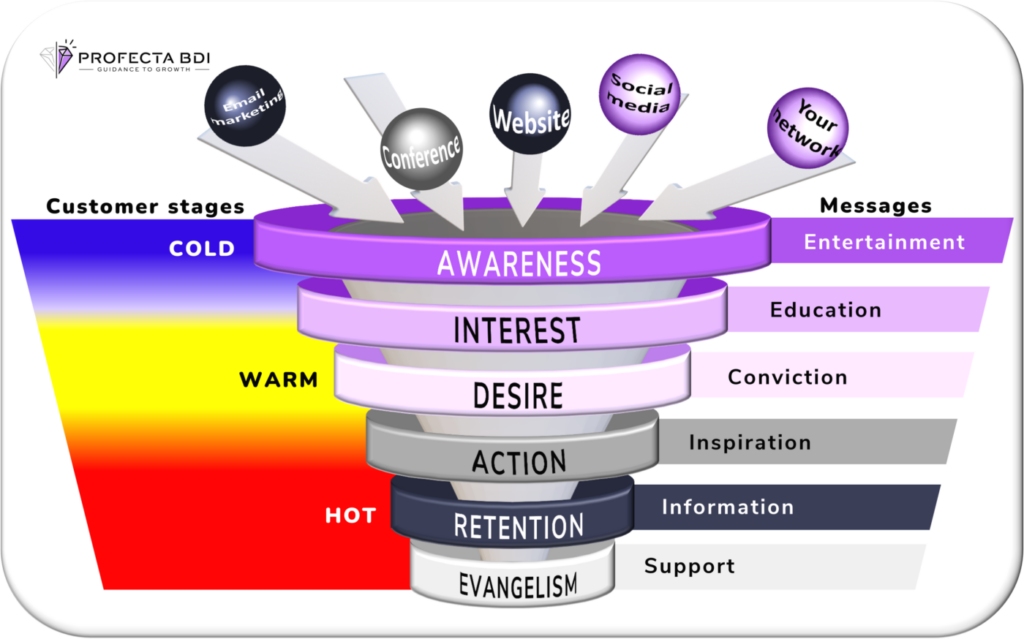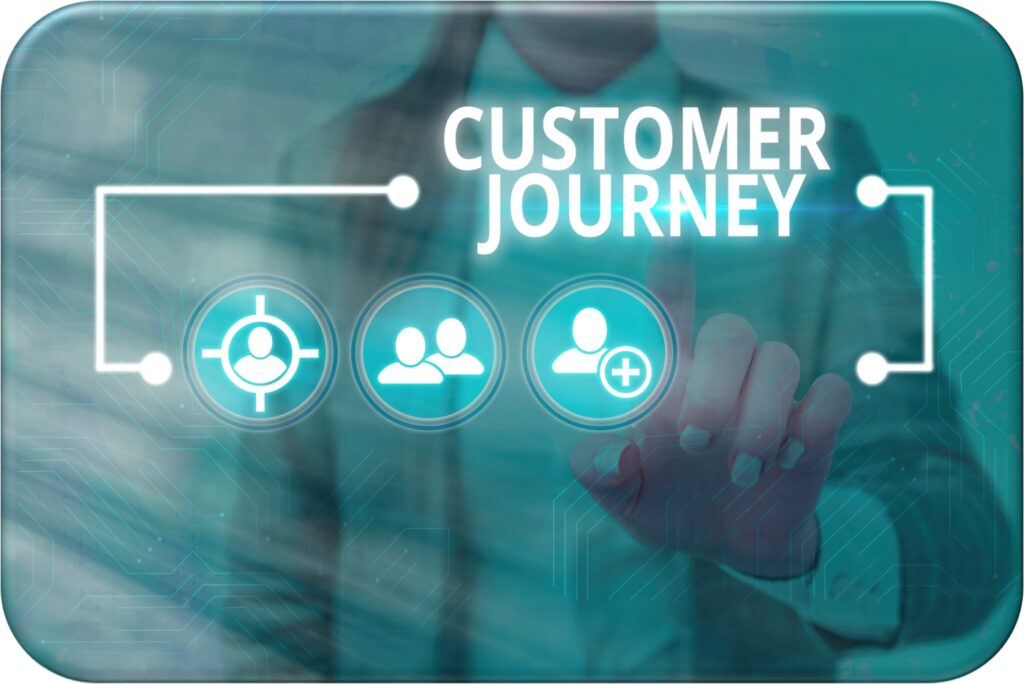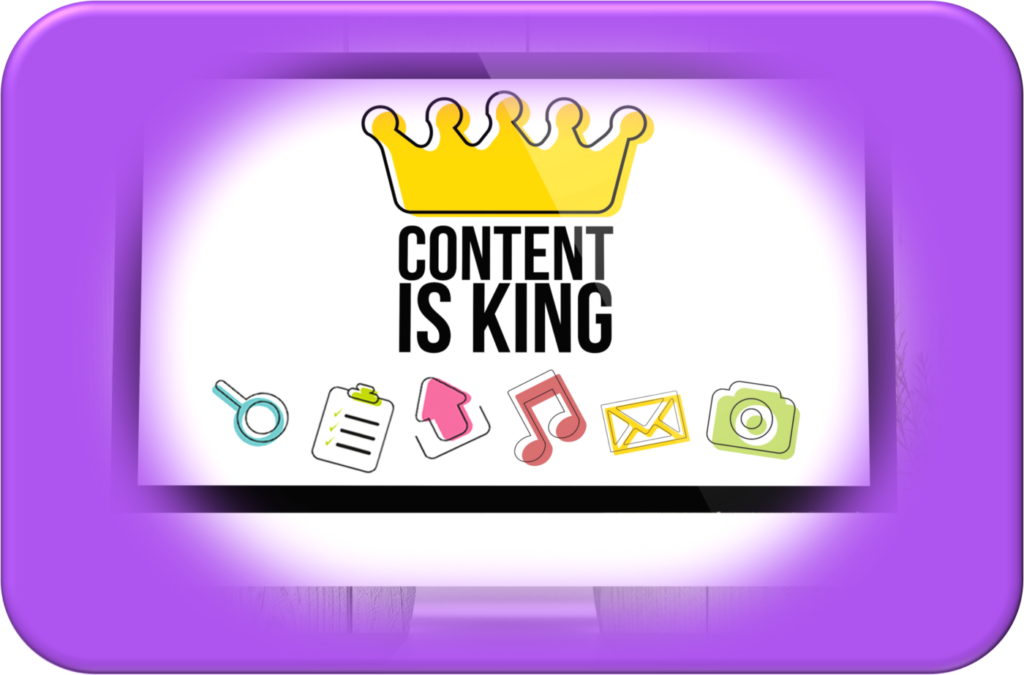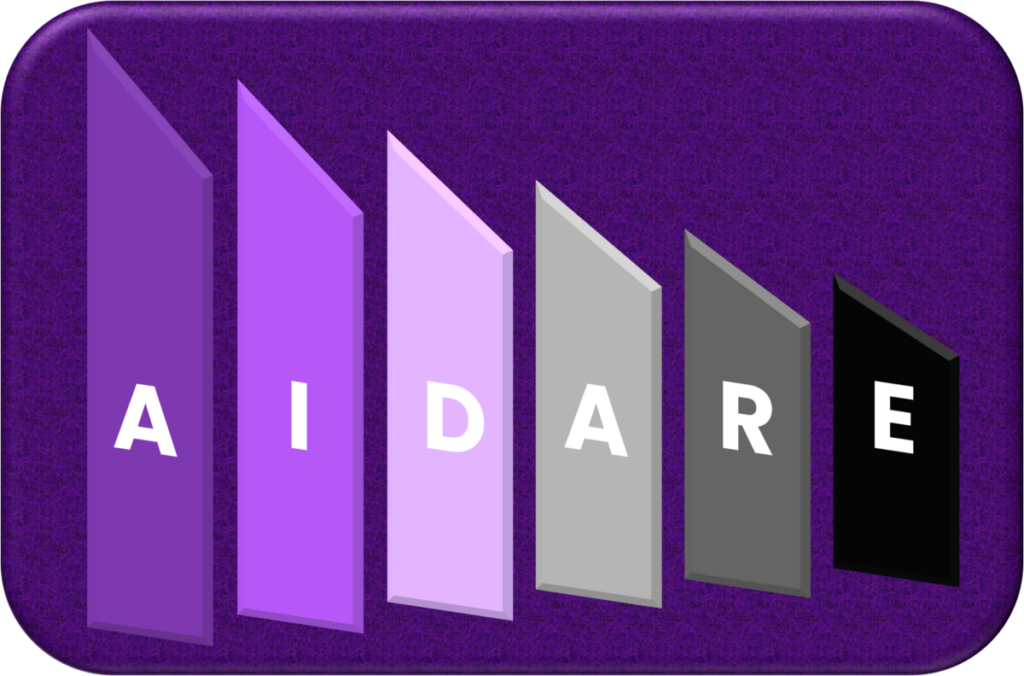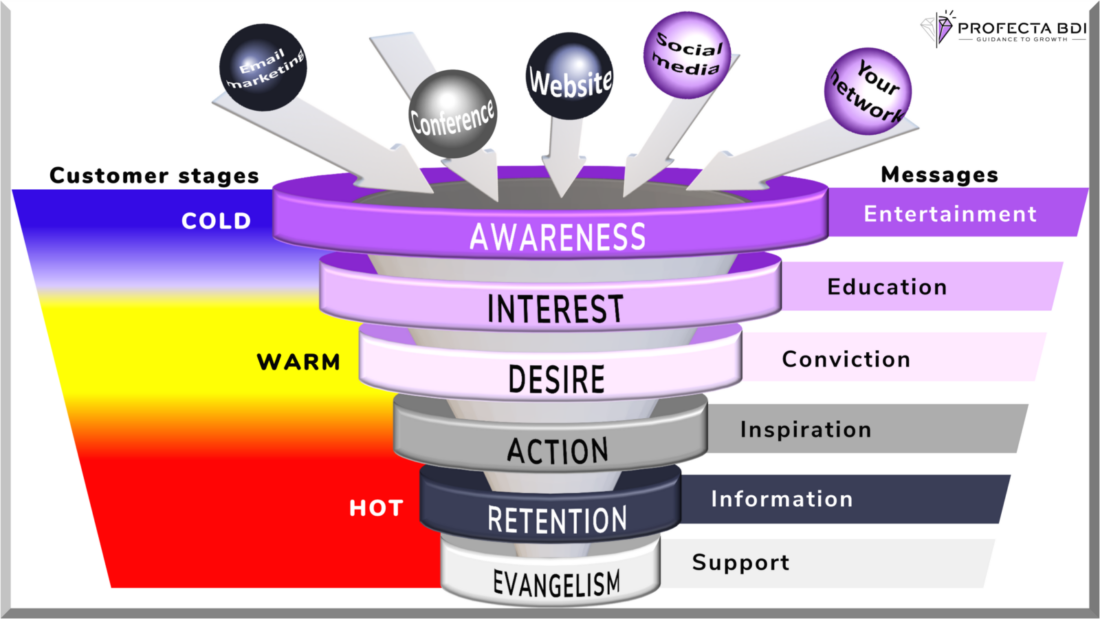
How to start selling your translation services in 2023 (works in 2024, too)
General
Funnel for your marketing and sales success
How to get good customers for translation and localization services is a perennial topic. This blog is intended to help those who are not sure how to build or grow their customer base as well as those who have been engaged in business development through marketing and sales.
What you need to grow your translation business
Let’s start from scratch to see how marketing and sales fit into the picture of your business. Here we’d like to use a simple metaphor to show the importance of the elements that make your business stable and long-lasting.
Think of your business as a table with four legs, all of which need stability so the money doesn’t fall off.
♦ One leg is your portfolio of translation services, your irresistible offering of expertise.
♦ The second leg is your sales, which you have to make everywhere you go or don’t go.
♦ The third leg is your marketing, which you use to show that you’re there to help with your translation services in this jungle called the market.
♦ And the fourth leg is the people you work with to deliver the best solutions to your customers.
Marketing, sales, business plan and target group in simple terms
You’re probably aware that effective marketing can be cumbersome and time consuming for many language service providers, be they companies, agencies or freelance translators.
Marketing supported by sales activities normally increases the sales of translation and localization services, but it must be set right from the very beginning to be effective. And the starting point is your marketing and sales strategy, where a sales funnel plays the most important role, of course, accompanied by a short and effective business plan.
But first you have to know:
♦ who you are doing translations for
♦ why you exist on the market
♦ who is willing to pay for your translation services
♦ what your customer industry is about and the problems they might face
♦ why they actually need translation and can’t or won’t do it themselves
♦ whether they use your translation to sell on different markets or train employees abroad
♦ how you help them make their lives easier with your translation services
♦ what their pains and fears are when it comes to translation
♦ how you help them relieve their pain so that they feel secure, trustful, and connected
♦ how you contribute to pursuing their interests or achieving their goals using your translation services
In a nutshell, your target group. Then you will definitely know what to talk about on your website, blogs, videos, and socials, that is, in your content marketing.
And of course, what posts to boost and ads to pay, which is a more difficult decision to make. At the end of the day, this all serves as a basis for the so-called relationship marketing.
Sales (or marketing) funnel is what you need
In this blog, we’ll explain in simple terms how to build the sales funnel specifically for your translation and localization services. A sales funnel shows your customers’ entire journey with you from the point they hear about you to the sale of your translation. In marketing terms, from lead generation and nurturing to paying customers.
And hopefully, they become the best evangelist for your services, raving about how satisfied they were with your translation and working with you as a professional and a person. Referrals are still the best marketing and sales you can have, but you have to get there first.
There are a ton of sales funnel models and explanations out there, but at Profecta BDI we like to use our own, which we find extremely helpful for translation and localization services, but also for other professional services like IT, legal, accounting, and financial services. In short, all intellectual services that require a computer and where you spend almost a whole working day.
Funnel for your customer journey
Now let’s look at the funnel’s structure so you understand how the marketing strategy works for you. We’ll use an example of a translation service later in this blog.
At the top of the funnel, you see how leads (potential customers) from your various marketing and sales activities fall into the funnel everywhere they come in contact with your services:
♦ your personal and professional network
♦ your website
♦ social media profiles
♦ industry or customer conferences
♦ email campaigns
♦ newsletters, etc.
Leads will first become aware and interested in you if you provide them with free valuable content such as useful videos, PDF checklists, or how-to guides until they’re finally ready to take action and pay for your service. Or of course, you meet them in person at an event. The point is that you get their email address or telephone number so that you can reach out and call them to action. And a good contact list is invaluable.
Then it’s up to you to nurture the customer to keep them as long as possible. And ideally, you keep your customers so satisfied that they become your biggest fans and evangelists, recommending you somewhere that other people feel a certain level of trust.
Cold, warm and hot customers
On the left in the funnel, you can see the customer stages related to certain funnel stages: cold, warm, and hot. Cold means that the potential customer knows nothing about you and hasn’t given you their email or other contact information.
Warm means they’re familiar with your brand and know how you can help them. That’s why they gave you their contact information, maybe followed you on social media, read your newsletter, etc.
Hot means that they’re ready to order your translation services or are already in the process of buying them.
When to serve what type of content
On the right in the funnel, you can see six types of messages through content that should be getting across to customers that Julie Atherton brilliantly explained in her book Social Media Strategy (Kogan Page, 2019):
♦ Entertainment (engaging content that is enjoyable to consume)
♦ Education (unusual and motivating content that sparks something new)
♦ Conviction (‘How to’ content that teaches the user)
♦ Inspiration (persuasive content that presents compelling ideas)
♦ Information (sharing knowledge and leading thought)
♦ Support (demonstrating care/providing a helping hand)
Six stages that bring you revenues
In the central part of the funnel, you can see six stages of the customer journey:
♦ Awareness (they don’t know yet that you exist)
♦ Interest (they become interested because you can help them)
♦ Desire (they are eager to do business with you because they trust you)
♦ Action (they ordered their translation)
♦ Retention (you work hard to satisfy them every time)
♦ Evangelism (they wax lyrical about your translations and professionalism)
At each stage, you serve different content or take different actions to keep the leads or customers in the loop and close to you. The journey of each customer is different, so you don’t think that each customer has to go through each and every phase. Of course, it would be perfect if they decide to order your translation services already at the awareness stage, but this might happen too, depending on how urgently they need your translation services.
A translation company looking for legal translation clients
OK, now let’s get down to the example of a translation company XYZ that provides legal translation services to a few customers and wants to expand its customer base. XYZ has experienced translators, solid translation memory and smooth workflows so their CEO feels confident the company can embrace new customers. In a nutshell, necessary people, technology and procedures to get new deals.
Their target group is legal offices or lawyers in their country, which is why they first get the list of all legal entities that are still working, hopefully with the data about their revenues, presence in different countries, their customers if working with foreigners, etc. This gives you an idea of the potential on the market.
For their funnel in the table below, we will use examples of both traditional and digital marketing. Mind you, traditional marketing is still alive and kicking.
| Funnel stage | Digital | Traditional |
|---|---|---|
| Awareness | • Website (SEO optimized) explaining how legal translation works • Blog showing how XYZ helped a legal firm translate 500 pages in three days | Events attended by legal experts such as conferences, meetups, lunches |
| Interest | • Email campaign about how your legal translation saved thousands of euros to a legal firm • Webinar about specifics of legal translation • Retargeting campaigns on social media | Phone call or in-person meeting |
| Desire | • Sales page about the benefits of having a translation partner for legal translations and confidentiality • YouTube video about the quality of legal translations in court procedures | Ads in a special magazine for legal experts |
| Action | • Offering a translation package or subscription to your services • Signing the NDA and Cooperation Agreement | Sending your box of chocolate |
| Retention | • Special offers for long-standing customers • Satisfaction surveys • Regular friendly email | In-person follow-up meetings |
| Evangelism | • Providing a boiler-plate referral text about your company • Kindly asking to share the text with other companies | Dinner |
If you want to work with other peers from the industry either as a vendor or customer, you can always visit the industry events such as ELIA, GALA, Meet Central Europe, or other conferences that take place throughout the year. On these events you may bring your one-page leaflet and business card to in-person events to stay memorable.
We hope this blog has helped you see the benefits of having a well-developed sales funnel and that you can do it yourself.
If you want to learn more about how to use your marketing to sell more translation services, visit our Academy workshop Fortify your marketing.
